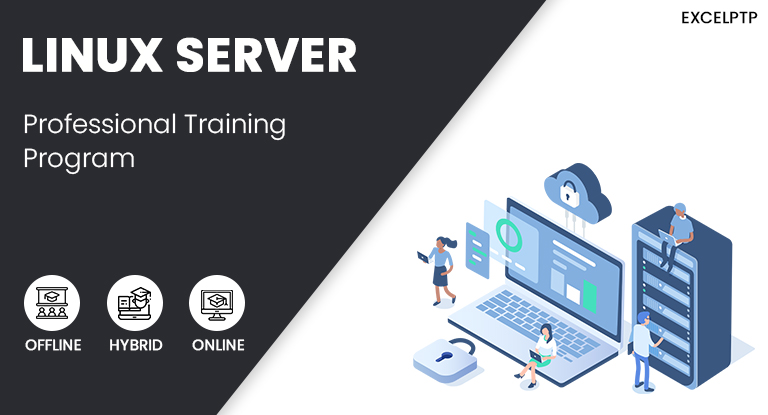
| Course Level: | Beginner to Advanced |
| Course Duration: | 4 Months | 8 Months |
| Training Days: | Monday to Friday |
| Training Time: | 4 hours / Day | Regular Office Time |
| Course Mode: | IN-class (Offline) at our premises |
| Course Type: | JOB oriented training |
| Course Start On: | On Registration | Admission |
| Class Size: | 1 to 1 | No Groups| No Batch |
COURSE BENEFITS
-
Considering is your last training: We assure for knowledge, so once your get job then your training will end.
-
Know your skills:Choose/Suggested a technology what you can do best.
-
Authenticate your skills: Entire course is on industrial practice so awarded with experience latter on placement.
-
Be highest paid fresher:We invented a unique model to get the job with highest starting salary, if you get good offer then US, you can join to them.
-
We don’t bind your ability: No specific course content, learn as much as you can, beyond the topics it helps to become logically sound.
Networking
Hardware
Software
IT Asset management
LAN , WAN and WIFI Networks
Router and switch configuration
Understanding of IP, Protocols
Network Hardware and its Configuration
Internet connectivity
Cables and connections
Understand of computer Hardware
Installation of various hardwares
Finding issues related to hardware
Installation of Drivers
Resolving issues
Updates and upgrades firmware and software
Installation of Softwares
Development and programming related softwares
Software updates and its versions
Understanding Linux Command line
Logical and complex Commands
Installation of linux OS and Server OS
Installation of Packages
Libraries and the dependencies
Configuring Linux Yum Server
Understanding the Yum repository Server-Client system
Linux Services, the important system files
Utilities, Directories
Remote access and permissions
Putty and SSH commands
Learning about SystemD
Linux-specific system and service manager
Linux user management
Groups, Attributes
File permissions, Granting permission
Setting user and group disk space quotas
Linux file system quotas
Managing the Linux File System
Understanding the Logical Volume Management
Allocating disks, Stripping, Mirroring, Resizing
Deploying LVM for setting hard disks
Understanding the concept of RAID data storage virtualization
Linux Kernel with RAID Support
Implementing the software RAID in Linux
Server Configuration in Linux
FTP/SFTP, the HTTP Server/Client Systems configuration
Understanding the Samba Open Source tool
Simple Mail Transfer Protocol
Configuring the Samba Server and SMTP with Linux
Understanding the basics of firewall in Linux
Overview Of SOFOS Firewall
Deploying the firewall
Iptables in Linux
Testing the firewall rules
Understanding how to configure databases in Linux
Working with MySQL database
Working with MariaDB database
Learning about the various control panels
Various uses and applications in various service
Deploying of control panels to manage the Linux servers
Understanding of Software development lifecycle
Overview of AWS (Amazon Web Services)
Understanding of Devops
What is GitHub?
Setting Up a GitHub Account
Installing Git
Setting Up a Text Editor
Exploring a GitHub Repository
User Accounts vs. Organization Accounts
Understanding the GitHub Flow
Branching with Git
Local Git Configuration
Working Locally with Git
Collaborating on Code
Editing Files on GitHub
Merging Pull Requests
Viewing Local Project Local History
Streamlining Workflow with Aliases
Resolving Merge Conflicts
Workflow Review
Protected Branches
Code Owners
Git Bisect
Reverting Commits
Helpful Git Commands
Viewing Local Changes
Tags and Releases
Workflow Discussion
What is a sprint and sprint planning?
How to do spring planning on GitHub
Practice and conclusion
Working on problems, task, Define ideas to resolve
Start working, Explore Troubleshooting methods
Get help from Google to find right Solutions
Complete task on timeline, make better plannings to achieve
We have Internship / project training for you with unique practical based learning thats make you Industry ready. Step in as Intern and step out as professional. First learn how industry works and its standards. Then complete your project Under experienced Developer’s guidance for practical industry exposure
Make a plan about how we can achieve our goal with deadline
Discussed & finalise Project definition
Clear with Basic Network, CCNA, CCNP and software Concepts
Define difficulties and solutions for projects
Research computer OS like linux, Mac OS, Windows problems and solutions
LEARN WHICH BEST SUITS YOU
No limits on learning, no limits on duration, no limits on salary, no limits on interviews, learn as much as you can & get ready for your first job.
4 MONTHS TRAINING(CODE :- PTP 4)
-
4 months training duration
-
Monday to Friday (04 hours / Day)
-
Only practical based training
-
Individual 1 to 1 training
-
Professional developers as trainer
-
Stipend provide based on performance
-
Confirmed job – on-job training program
-
Diploma/Graduate (Any Stream), Career Changers & IT Enthusiasts.
12 MONTHS TRAINING(CODE :- PTP 12)
-
Up to 12 Months or Until Placement
-
Monday to Friday (full day Adjusted Based on Work Opportunity)
-
Live Work-Based Training with a Collaborative Team
-
1 to 1, Real-World Project Experience & Industry-Standard Skills
-
Unlimited Placement Support with Dual Job Opportunities
-
Industry Diploma Recognized as Experience + Training Certificate
-
Join as a Fresher, Graduate as an Experienced Professional Developer
-
10+2, Diploma/Graduate (Any Stream), Career Changers & IT Enthusiasts.






















